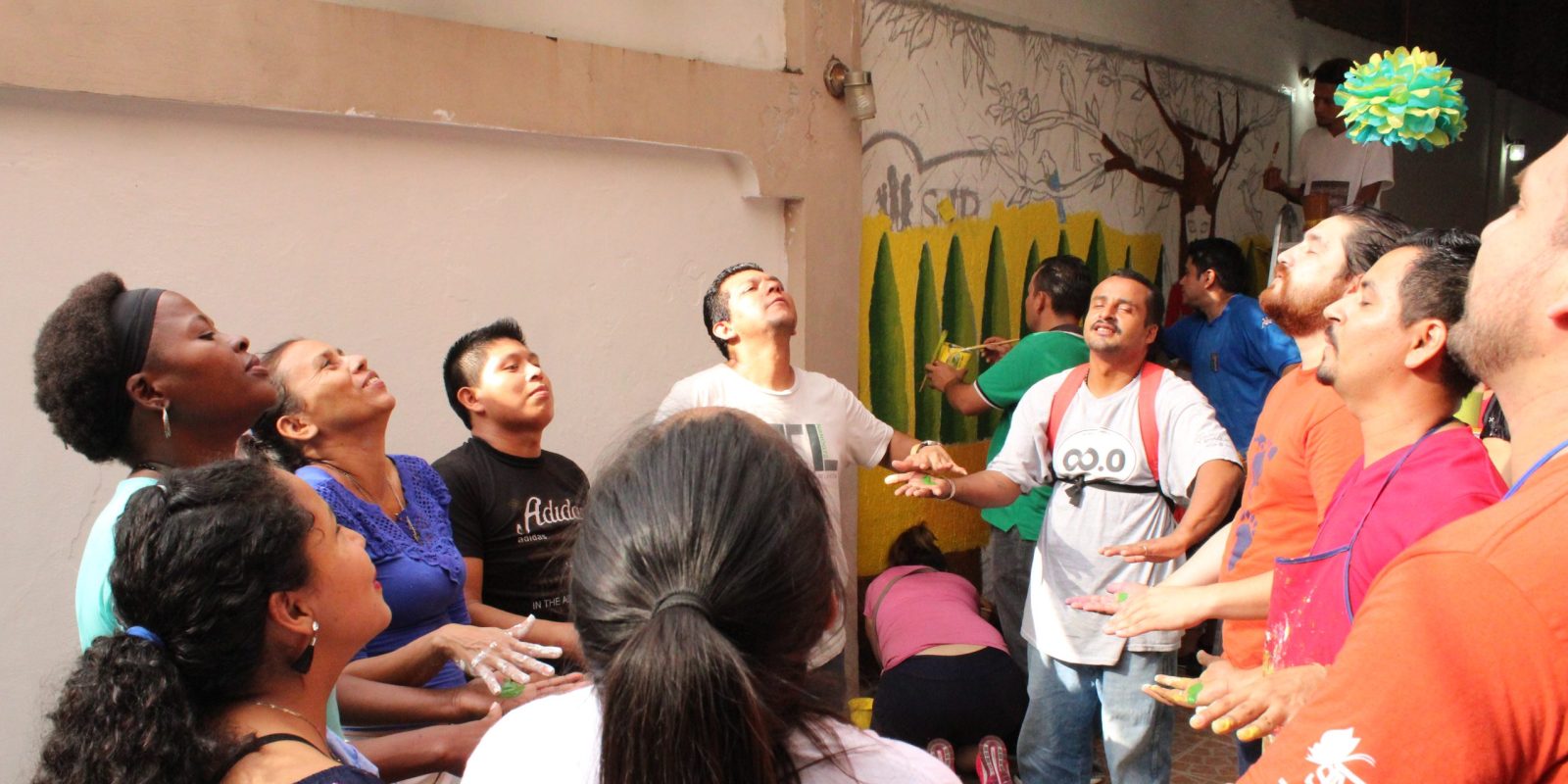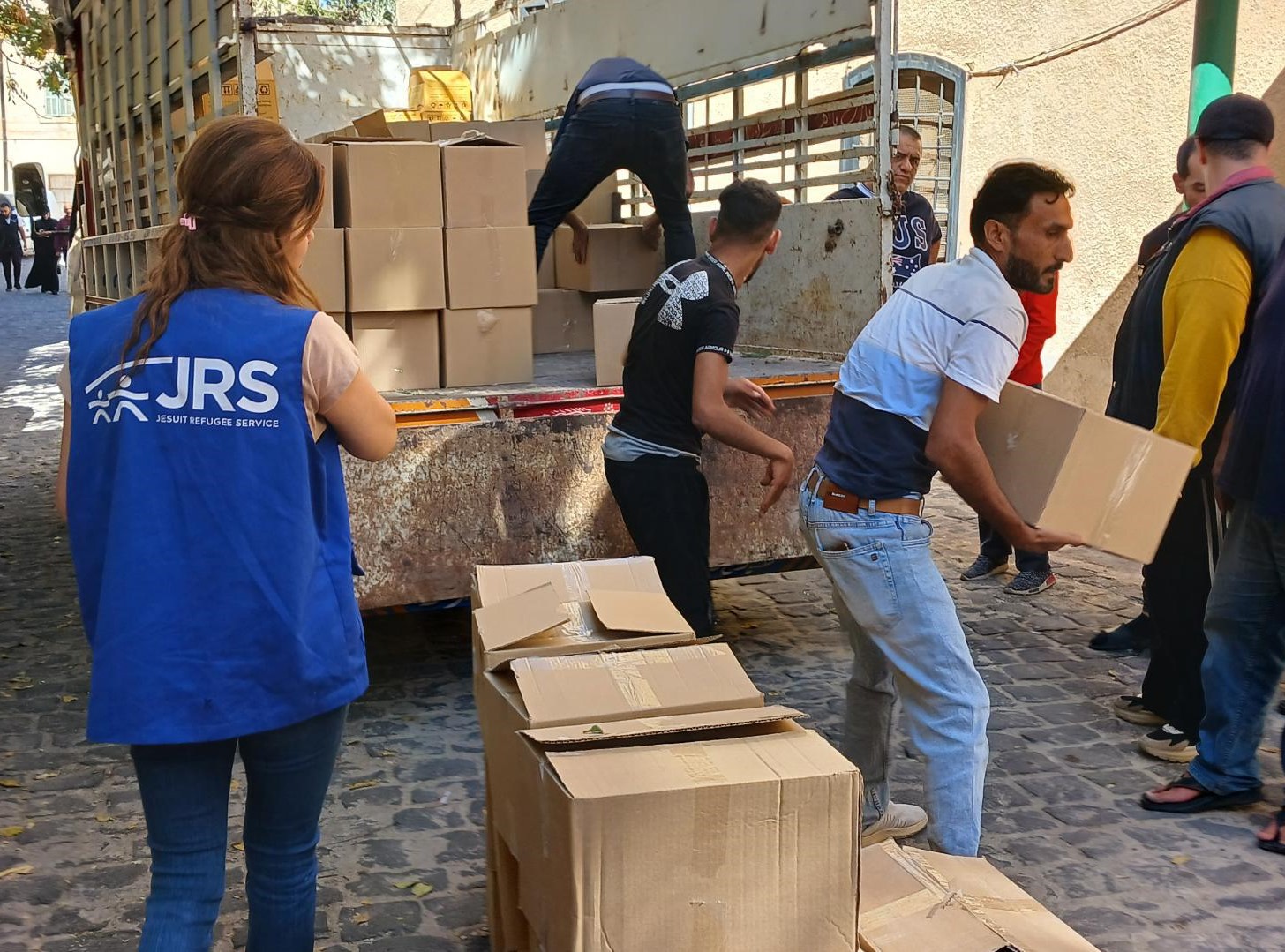On the US-Mexico Border: Witnessing Accompaniment in Action
13 July 2021

This story first appeared in JRS INSIDER, a monthly newsletter including stories of impact across JRS global.
During my first year with JRS/USA, I felt like I’d just begun to really grasp the meaning of the word “accompaniment” — a mainstay of our mission and identity.
This past week, with our first opportunity to travel since COVID-19, I witnessed the full power of accompaniment in practice through the JRS Binational Border Program — demonstrating just how imperative JRS’s legal and mental health services are at the US-Mexico border.
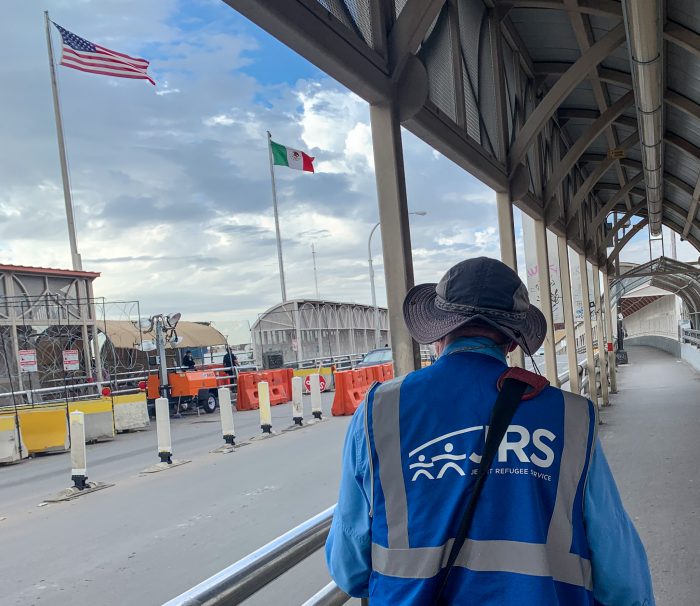
Misty mountain tops, water-logged streets, and cloud-filled skies painted the morning landscape during my first few days in El Paso, Texas.
I’d crossed The Bridge — El Paso del Norte — with my teammates, Maria Sajquim de Torres, US Border Program Manager, and Joan Rosenhauer, JRS/USA Executive Director.
We first made our way across town to begin a half day of planning with our bi-national program partners: JRS Mexico and Jesuit Migrant Service — Mexico.
Despite a challenging mandate to protect and walk with a record number of migrants at the US southern border, our partners and team members seemed more hopeful and determined than ever to make a difference.
Morning planning then gave way to shelter visits around the city where JRS/USA provides key mental health and psychosocial support (MHPSS).
“As an immigrant myself, I can understand the agonizing decision of leaving everything behind and venturing into an unknown and uncertain future,” Maria has told me.
“In my work, I look for opportunities to engage with those we serve and talk with them.”
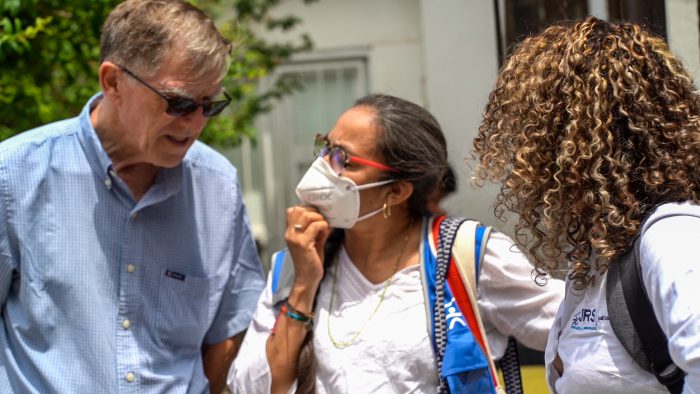
We drove further across town: first, to Casa San Oscar Romero, a Claretian-led facility which has cared for migrant families and their young children since 2019, then Annunciation House, run by two extraordinary women: Crista, a Catholic sister, and Christina.
“I’m a third generation Mexican-American,” Crista says as we gather inside the shelter.
“Honestly the border is in my blood. I’m aware of just how much my heart is in Juárez.”
For over two years and throughout the ravenous COVID-19 pandemic, both sisters have accompanied dozens of families from Central Mexico and Northern Triangle countries fleeing persecution from gangs, cartels, and economic destitution.
They provide temporary lodging, food, and care for those awaiting decision on pending asylum cases in the United States, many spurred by the now-reversed Migration Protection Protocols(MPP) or “Remain in Mexico” policy.
“We’re dealing with a backlog of 20,000-25,000 people,” Melissa Lopez, Executive Director and Attorney at Law at Diocesan Migrant & Refugee Services, Inc (DMRS) told us.
The only full-service immigration legal aid clinic to serve low-income migrants in the southwestern United States, DMRS has been on the border for over 35 years, but focuses almost exclusively on migrants who have crossed.
“Our biggest gap today is not being able to serve those still in Mexico,” she says. “Mental health and legal work is desperately needed, [especially] in evaluation, surveys, and with a licensed clinical social worker.”
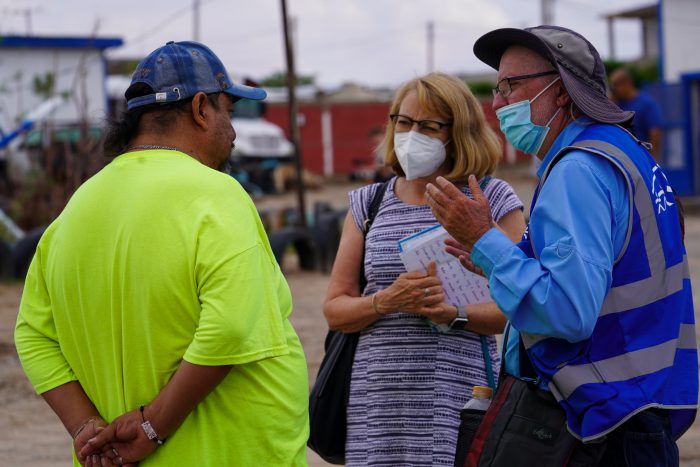
Some thirty minutes west of downtown, we found ourselves outside a third shelter — Pan de Vida or “Bread of Life” — in Puerto de Anapra, one of the most challenged communities within all of Ciudad Juárez.
Fr. Michael Gallagher, SJ, Border Project Legal Specialist, and I speak with Gloria, a 32-year-old Honduran woman who is waiting for the US government to process her own asylum case.
“We were a family of coffee growers well known in our community and one of my uncles was assaulted by a criminal gang and they killed him,” she tells us.
“We felt so afraid because we were threatened by the group. They thought that we’d take revenge, but we’d never get involved with that.
The gang started a war against us without any notice. They killed children and my mother and sister decided to flee to the United States.”
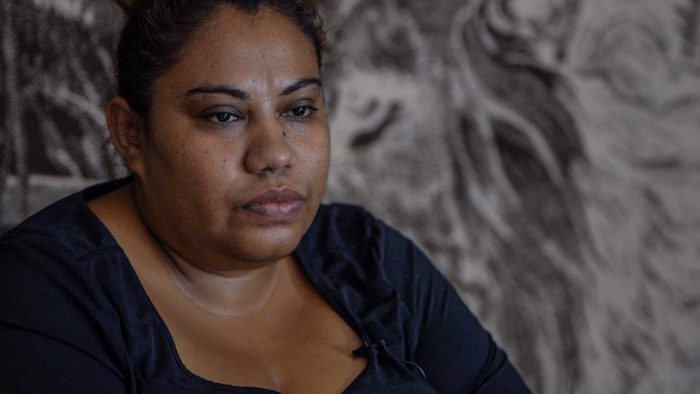
Gloria’s courage and strength are a powerful testament to her will to reunite with family and live a safe life once more. Through informal psychosocial support sessions with JRS, she’s now able to better process and manage her distresses.
As we leave her temporary home — a small shelter which she shares with other displaced women — she says that her greatest hope is to be able to permanently cross over into the United States.
When I reflect back on her wishes and my time at the border, I can’t help but feel the tireless efforts of JRS staff and our program partners who strive to accompany each and every day.
For Gloria: We can’t wait to be able to finally welcome her one day.

